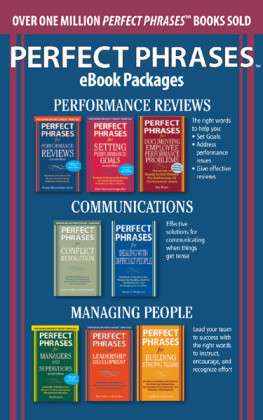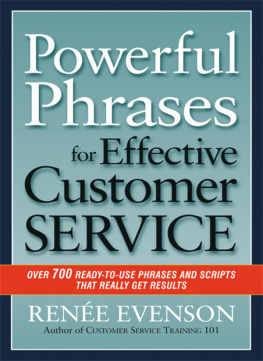

Copyright 2005 by The McGraw-Hill Companies, Inc. All rights reserved. Manufactured in the United States of America. Except as permitted under the United States Copyright Act of 1976, no part of this publication may be reproduced or distributed in any form or by any means, or stored in a database or retrieval system, without the prior written permission of the publisher.
ISBN: 978-0-07-170922-4
MHID: 0-07-170922-3
The material in this eBook also appears in the print version of this title: ISBN: 978-0-07-145405-6, MHID: 0-07-145405-5.
All trademarks are trademarks of their respective owners. Rather than put a trademark symbol after every occurrence of a trademarked name, we use names in an editorial fashion only, and to the benefit of the trademark owner, with no intention of infringement of the trademark. Where such designations appear in this book, they have been printed with initial caps.
McGraw-Hill eBooks are available at special quantity discounts to use as premiums and sales promotions, or for use in corporate training programs. To contact a representative please e-mail us at bulksales@mcgraw-hill.com.
TERMS OF USE
This is a copyrighted work and The McGraw-Hill Companies, Inc. (McGrawHill) and its licensors reserve all rights in and to the work. Use of this work is subject to these terms. Except as permitted under the Copyright Act of 1976 and the right to store and retrieve one copy of the work, you may not decompile, disassemble, reverse engineer, reproduce, modify, create derivative works based upon, transmit, distribute, disseminate, sell, publish or sublicense the work or any part of it without McGraw-Hills prior consent. You may use the work for your own noncommercial and personal use; any other use of the work is strictly prohibited. Your right to use the work may be terminated if you fail to comply with these terms.
THE WORK IS PROVIDED AS IS. McGRAW-HILL AND ITS LICENSORS MAKE NO GUARANTEES OR WARRANTIES AS TO THE ACCURACY, ADEQUACY OR COMPLETENESS OF OR RESULTS TO BE OBTAINED FROM USING THE WORK, INCLUDING ANY INFORMATION THAT CAN BE ACCESSED THROUGH THE WORK VIA HYPERLINK OR OTHERWISE, AND EXPRESSLY DISCLAIM ANY WARRANTY, EXPRESS OR IMPLIED, INCLUDING BUT NOT LIMITED TO IMPLIED WARRANTIES OF MERCHANTABILITY OR FITNESS FOR A PARTICULAR PURPOSE. McGraw-Hill and its licensors do not warrant or guarantee that the functions contained in the work will meet your requirements or that its operation will be uninterrupted or error free. Neither McGraw-Hill nor its licensors shall be liable to you or anyone else for any inaccuracy, error or omission, regardless of cause, in the work or for any damages resulting therefrom. McGraw-Hill has no responsibility for the content of any information accessed through the work. Under no circumstances shall McGraw-Hill and/or its licensors be liable for any indirect, incidental, special, punitive, consequential or similar damages that result from the use of or inability to use the work, even if any of them has been advised of the possibility of such damages. This limitation of liability shall apply to any claim or cause whatsoever whether such claim or cause arises in contract, tort or otherwise.
About the Author
Michael Betrus conducts seminars and workshops in career guidance and has written numerous career guides, including 101 Best Cover Letters and 101 Best Rsums. A sales director and hiring manager for a Fortune 250 company, he has spent much of his career coaching candidates and enjoying the successes of how they execute their job searches.
Contents
Introduction
T oday, resumes are more a part of a job search than ever before. They certainly are more important than they were 10 years ago, when many business experts embraced networking as the key source for finding a new position.
Okay. I do buy into that. Networking is a top source for finding a new position. But even when a candidate is brought to me through a networked source, the first thing I say is, Have them send me their resume and I will give them a call. Between you and I, after 10 job-search-related books and having managed hundreds of people, its hard to not be critical of poor resumes. Still, its table stakes for gaining an interview.
Now, in the e-mail age, all large organizationsand many small ones as wellpost jobs on web sites like careerbuilder.com and monster.com, not to mention major newspaper online job boards. What is the first thing you do when you find a job posted you like? You e-mail your resume! You see, in the electronic age of e-mail, resumes play a bigger role than ever before.
I wish you could take the time to sift through a few hundred resumes posted on career web sites and try to find a good candidate. The funny thing is, as difficult as it is for a job seeker, its pretty darn difficult on the hiring side too. You would be shocked how tough on occasion thats been for me, or my recruiting department, to find good candidates.
I bet as they, and I, have mined through the career web sites looking for candidates, we have passed on many great people. In fact, I would bet the odds are greater than Tiger winning another golf tournament.
Unfortunately, great people still write poor, unflattering resumes. Why?!!! When a hiring manager or recruiter is sifting through resumes, you have all of 10 to 30 seconds to impress them enough to read on. What makes them read on? Im smiling at the irony as I write this, but its perfect phrases. When candidates write great career summaries and great descriptors of past accomplishments, they get noticed.
That is why I wrote this book. Hopefully, it will help you craft some perfect phrases for your resume.
Perfect Phrases for Resumes
Part One
Resume Basics
O n the front page of the employment section of a late 2003 Sunday edition of one of the largest newspapers in the country, there was an article debating the pros and cons of using a resume. One commentary was that the resume is outdated and that in todays world of electronic-based communications it will go away. It went on to say that the resume has long evolved and that the days of using nice stock paper and matching envelopes has passed. At one point it even questioned whether hiring managers want to be bothered with reviewing resumes.
The article was partly correct. The traditional uses of a resume have evolved. Among all the clients we have advised over the last year, none have concerned themselves with paper stock. However, hiring managers and internal and external recruiters do need resumes. What they detest are poorly written resumes that make them work to understand the profile of the candidates.
Resumes are still a huge part of the job search process. The first step in any selection process is to review the resumes of candidates, even those with inside sponsorship. In this section we want to teach you that:
 You need to create an effective and useful career summary for your resume.
You need to create an effective and useful career summary for your resume.
 You need to document your accomplishments in the employment history sections and make them line up as closely as possible with the requirements of the company.
You need to document your accomplishments in the employment history sections and make them line up as closely as possible with the requirements of the company.
People pay hundreds of dollars to have professionals teach them how to present these two things. The career summary, in particular, is crucial. If you were to poll hiring managers, human resources recruiters, and external recruiters, fewer than 10 percent would say they read every bullet describing each job a candidate had. So, if the summary section is weak or nonexistent, theres even less likelihood that the whole resume will be read.
Next page





 You need to create an effective and useful career summary for your resume.
You need to create an effective and useful career summary for your resume.